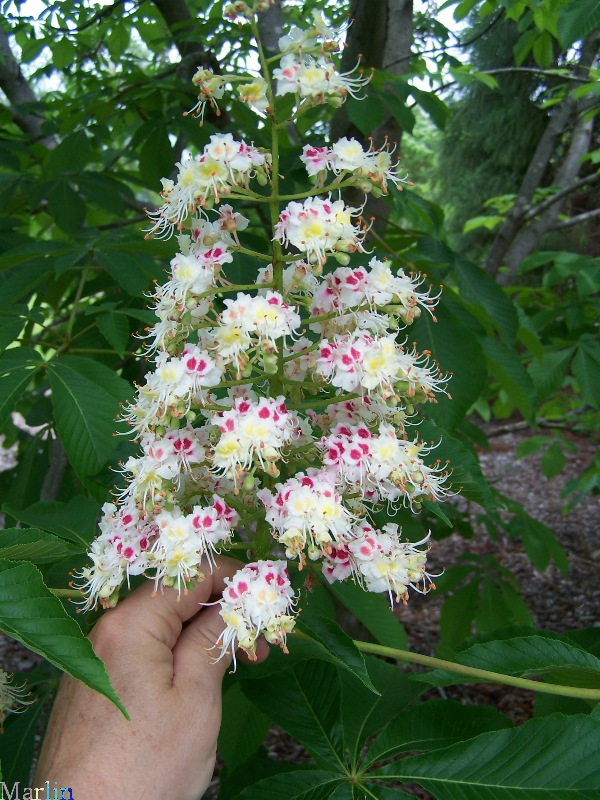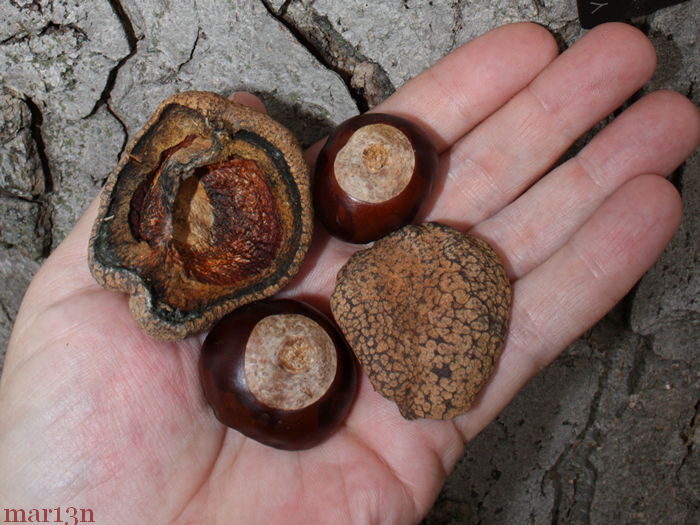Japanese Horse Chestnut – Aesculus turbinata
In bloom on May 25th near Chicago; flower stalks (technically called a thryse) are a foot tall. This tree is 24 years old [1]
Family Hippocastanaceae – Horse-Chestnuts & Buckeyes
Introduced to North America in the late 19th century, now widely planted as an ornamental or specimen tree.

Flowers are creamy-white with a red blotch, and are borne on an upright thyrse up to a foot tall in late spring. The fruit is a nearly spineless, egg-shaped yellow-green husk with usually 1 brown seed inside [3]. A truly spectacular specimen tree, suitable for formal gardens or wide lawns, Japanese horse-chestnut is tolerant of a wide range of soils. Grows to 30 m under ideal conditions.
The large leaves turn bright orange in autumn. Winter buds are red, glossy, and sticky. Leaves are compound and palmate, with 5 to 7 obovate, stalkless, toothed leaflets all attached at the same point at a central leaf stalk. [2]

Palmate leaflets to 16 inches long; seeds, horse-chestnuts below

Conkers
References:
1. Japanese Horse-Chestnut, Morton Arboretum accession 555-83-1, photos by Bruce Marlin
2. John White and David F. More, The Illustrated Encyclopedia of Trees – Timber Press
3. Flora of China, Aesculus turbinata
Family Hippocastanaceae – Horse-Chestnuts & Buckeyes
Trees Index | Pine Family | Beech, Oak | Nut Trees | Birch Family | Magnolias | Rose Family
Tree Encyclopedia / North American Insects & Spiders is dedicated to providing family-friendly educational
resources for our friends around the world through large images and macro photographs of flora and fauna.

